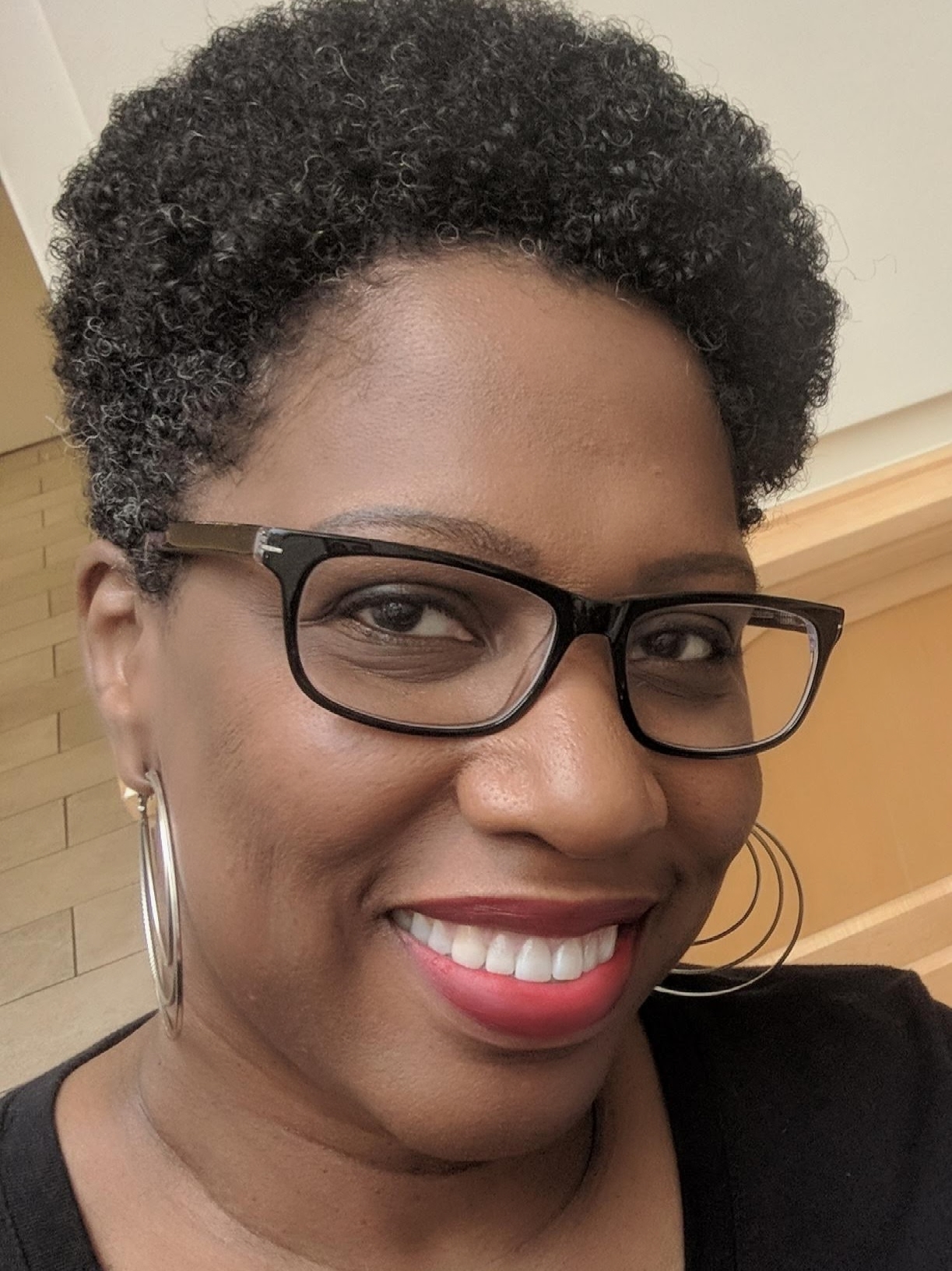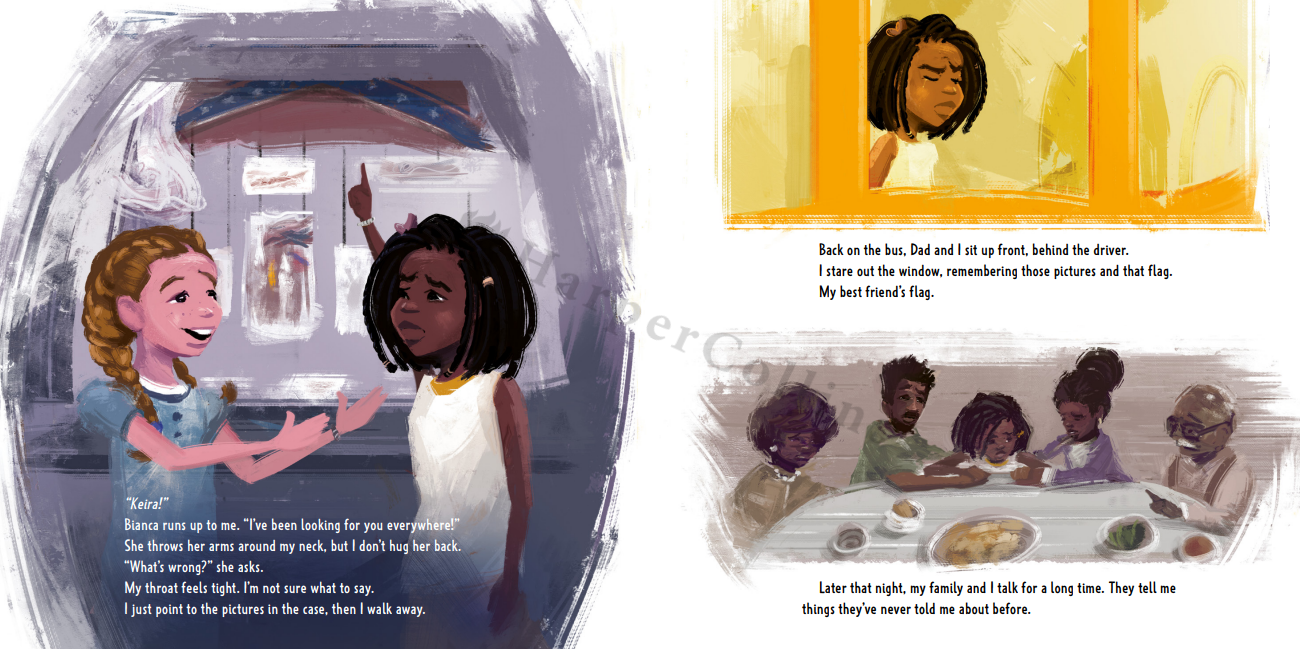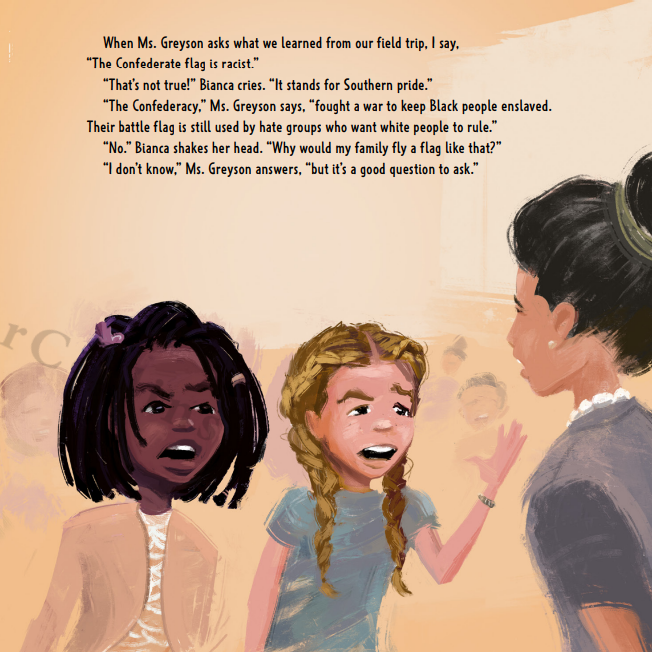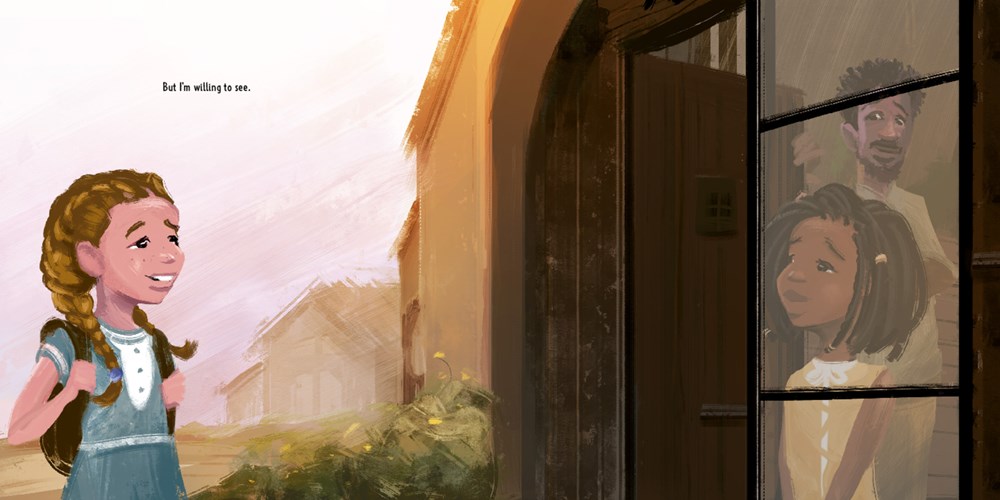
Amidst a cavalcade of new picture books seeking to engage children in difficult issues I noted that, in her recent interview here, The Year 2023 singled out one book in particular, That Flag, by Tameka Fryer Brown, illustrated by Nikkolas Smith. Reading the book I found myself agreeing with The Year 2023. The book is exceptional in conveying to young readers the role character and humanity plays in a story imbued with a charged and volatile narrative. To find out more I caught up with the book’s author.
Kenny: One aspect shared by many great picture books is that they make something difficult to create look effortless. How did you begin to conceptualize this story as a picture book? What, if any, challenges did you encounter finding and maintaining the center of your narrative while holding space for your characters’ multiple points of view?

Tameka: I always wanted That Flag to be a picture book. After nine members of Emanuel AME Church in Charleston, South Carolina were coldheartedly murdered by a 21-year-old Confederate flag-wielding white supremacist, I was angry and distressed. I was voicing my thoughts and feelings to an author friend, Donna Earnhardt, who suggested they could be the basis of a meaningful children’s book, especially one about the flag. I agreed and immediately knew it needed to be a story for younger kids, whose hearts and minds would be most receptive.
As a Black American who has lived my entire life in the South, I’m very familiar with the various points of view about the Confederate flag expressed by the characters in the story, so it really wasn’t a challenge to incorporate them. In fact, those multiple viewpoints might actually be the center of my narrative. My goal was to share the opposing perspectives, then show which was most supported by historical facts. I also wanted to convey how the Confederate flag makes so many Americans feel, and why its public veneration is detrimental to our society. With evocative art by artivist Nikkolas Smith, and expert guidance from editor Luana Horry, I think we were able to accomplish both.
Kenny: That Flag deals with some really complex elements of a child’s personal identity, cornerstone moments when information and narratives suddenly shift and shared points of reference diverge. How did you navigate these key, fork-in-the-road moments for your young characters?
Tameka: I just tried to be as honest as possible in depicting what happens in similar, real-life situations. One of those cornerstone moments you allude to is what I call the loss of racial innocence. It’s a rite of passage for African American children that typically occurs in some unexpected or heartbreaking way. In this story, however, Keira’s family guides her to the truth about her best friend’s flag with intentionality, using a museum visit and candid conversation to do so. Their proactive strategy empowers Keira and encourages her to speak her truth with confidence.

I guess the simplest answer to your question is that the whole book—including the fork-in-the-road moments—was created with lived experience, emotional honesty, and hope. That’s the writing formula I believe in.
Kenny: The adults in your book are crucial to the story. How did you approach the differentiation and commonalties of experience involved in notions of history, identity, justice, atonement, and responsibility? How did your approach differ when writing your child and adult characters?
Tameka: Regarding the differences and commonalities of the adult characters, again, I just drew from personal experience. I’ve heard all the major talking points of the Lost Cause Myth from white people before—without either of us knowing where those talking points originated! Being born and bred in the South, I’ve lived this stuff. So I think my writing comes from a visceral place that compares and contrasts these notions instinctively.

I have effectively been both Keira and Keira’s parents, so I was able to draw on my own emotions and memories in crafting those characters. Bianca and her parents were informed by life-long interactions with white people who believe (or purport to believe) the idealistic narratives about the Confederacy and their emblems. Bianca and her parents were also informed by the knowledge that when confronted with certain inescapable truths, some of these same people have ceased their defense and celebration of these symbols. One touching example can be found in the backmatter of That Flag, through one of the listed resources.
Kenny: There is a poignant moment in the book when the girls’ teacher, Ms. Greyson, responds to Bianca asking, “Why would my family fly a flag like that?” by saying, “I don’t know… But it is a good question to ask.” What role does the asking of questions play in the narrative arc of your story?

Tameka: Sometimes information comes to us unbidden, but most often it’s obtained through inquiry. Before the story begins, both Keira and Bianca have obviously received some level of information about the meaning of the Confederate flag. In both cases, however, what they received was insufficient for complete understanding. For Keira, this causes uncertainty. Keira’s parents are astute and aware of this, which is why they use the museum opportunity to provide answers for her enduring (albeit unvoiced) questions.
Although it’s not spelled out in the book, I envision Keira asking lots of questions during the family dinner. I also believe Bianca asks numerous questions of her parents, following the insightful one she asks of Ms. Greyson. Which obviously bears positive fruit.
It’s the inquisitive spirit of both girls that drives the story. Especially the ending.
Kenny: The book begins by establishing that Keira and Bianca share many things. As the book progresses, shared experiences like going to the museum and watching the news report on television become both a source of divergence and an opportunity for growth, reconciliation, and deeper connections. Given that your book will itself be a shared experience among readers, how do you hope young audiences will engage with your work?

Tameka: I have so many hopes.
I hope readers will gain insight on why the Confederate flag is a problematic relic.
I hope kids who identify with Keira’s experiences will feel empowered.
I hope kids who relate more to Bianca will feel inspired.
I hope young readers will walk away comprehending the importance of truth and emboldened to ask hard questions of the adults in their lives.
And I hope adults will investigate all the resources in the backmatter, to inform their own understanding and to assist them in providing holistic answers.
Kenny: If you were Ms. Greyson, which books would you choose as read-alouds for Keira and Bianca’s class?

Tameka: Born on the Water, because it tells the truth about our history.
Watercress and Each Kindness, because they illustrate the importance of empathy.
Speak Up and Not Done Yet: Shirley Chisholm’s Fight for Change, because they are both about using one’s voice for positive change.
Lilly’s Purple Plastic Purse, because it’s about making mistakes, making amends, and reconciliation.
Kenny: Thanks so much for these wonderful answers, Tameka!
Tameka: You are most welcome, Kenny. Thank you for such insightful questions.

A profound, important book — and an excellent interview. Congratulations, Tameka.
Thanks, Raul!